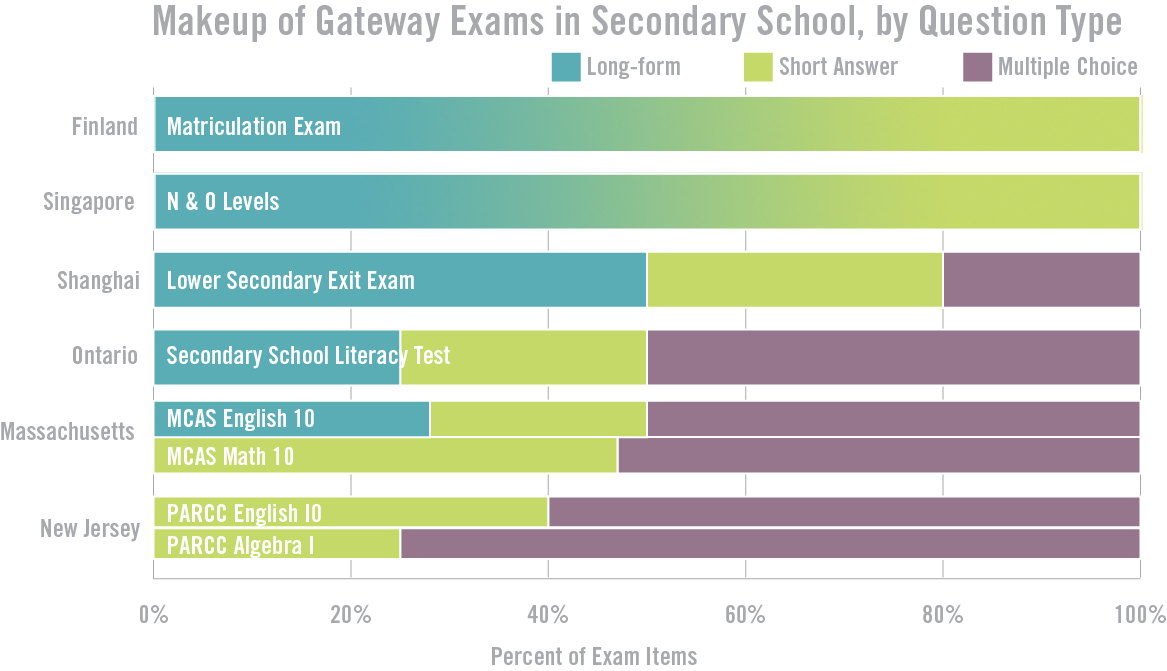By Nathan Driskell
“You are what you measure,” as they say in the business community. If that is true, then what does that mean when you are talking about student testing in the United States? The assessments currently used in most American schools have advanced beyond the multiple-choice questions that used to dominate. But these tests still rely mainly on item types that require students to select the correct answer from a set of choices, fill in a blank with an appropriate response, or match a set of like items. When high school graduates enter college or the world of work, however, they will have to complete extended tasks: complex problems with no clear solutions, research projects that require synthesizing complex and contradictory data sets, and long writing assignments.
The top-performing education systems want to know if their students are up to that task. Their exams are clearly designed to measure these skills. In these systems, high school exit exams emphasize essay and problem-based questions that require students to think critically, complete projects and design experiments, and complete long-form essays. This is not to say these jurisdictions do not include multiple-choice or open-ended short answer questions on their exams, but there are fewer of them and they are weighted less.
The chart below estimates the breakdown of test items in six jurisdictions: four top-performing international jurisdictions, and two of the highest-performing states in the United States based on the most recent National Assessment of Educational Progress (NAEP) scores. For each jurisdiction, we looked at the exams that students are required to take in order to exit compulsory school:
Finland’s Matriculation Exam, taken at the end of secondary (high) school, in a range of subjects of a student’s choice, and made up entirely of essay and short answer questions
Singapore’s N- and O-levels, taken in a range of subjects as students exit from secondary school, also made up entirely of essay and short answer questions
Shanghai’s zhongkao, the exam for exiting lower secondary (grade 10) and entering upper secondary, taken in Chinese, mathematics, English, physics, chemistry and politics
Ontario’s Secondary School Literacy Test, taken in grade 10
Massachusetts’ Next-Generation MCAS, taken in grade 10 in English and mathematics
New Jersey’s mandatory high school exams: PARCC English 10 and Algebra I (also used by several other states)
The chart calculates what percentage of a student’s score on the exam is made up of essay or extended task items compared to the percentage of a student’s score made up of shorter constructed response answers (fill-in-the-blank, short answer), and selected-response items like multiple-choice or matching. These are estimates. Because we want to show the balance of long-form essay and extended-task items to shorter items that require less critical thinking and sustained effort, we have combined several types of constructed-response items and done the same for selected response items.
This chart is not meant to suggest that redesigning exams so that they have more essays will fix American education. What matters is the teaching and learning that happens in schools. But if educators want to measure what matters to them, and if what we measure influences what we teach, then the content and structure of our exams are important for us to consider.





